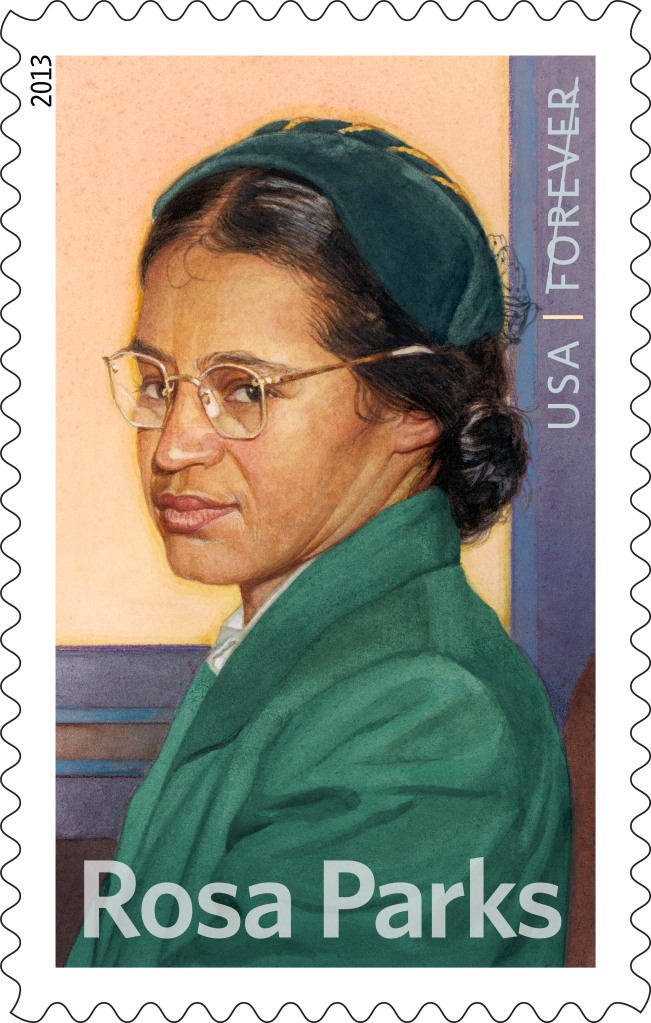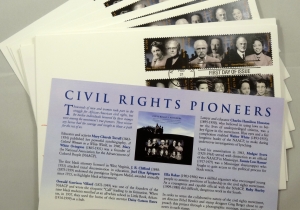When Rosa Parks (1913–2005) refused to give up her seat on the bus to a white man on December 1, 1955, it was no random act of courage. In a sense, her whole life had prepared her for what she did that day.
From an early age, Rosa Louise McCauley was conscious of the injustice she saw around her in the segregated South. As a young woman, she joined with her husband, Raymond Parks, whom she married in 1932, in the effort to free the “Scottsboro boys,” nine black youths who had been caught up in the discriminatory legal machinery then in place in Alabama. In 1943, she began working with the Montgomery chapter of the National Association for the Advancement of Colored People (NAACP), helping to transform the local branch into a more activist organization. That same year, she was forced off a Montgomery city bus for the first time under discriminatory laws requiring black passengers to sit in the rear section and to surrender their seats to white passengers on demand.
This First Day Cover bears an affixed Rosa Parks Forever® stamp and an official First Day of Issue pictorial postmark. Click the image for more information. (Rosa Parks’s name and image used under license with the Rosa and Raymond Parks Institute for Self Development.)
When the U.S. Supreme Court outlawed segregated schools in Brown v. Board of Education in 1954, people working in the civil rights movement understood that the ruling held important implications for all kinds of segregation, including on the bus lines in Montgomery. The following summer, Parks attended an interracial workshop at the Highlander Folk School in Monteagle, Tenneseee, learning, among other things, how to desegregate schools.
The workshop and her participation for many years with a community of civil rights activists served as sources of strength for the action she took on December 1, 1955.
Rosa Parks had the courage to act alone. But she knew she didn’t stand alone. She took heart from being part of a larger civil rights movement that opposed injustice and strove for equal rights for all in America.
The is one of three stamps celebrating freedom, courage, and equality being issued in 2013. It is being issued as a Forever® stamp. (Forever stamps are always equal in value to the current First-Class Mail® one-ounce rate.)


 fficial?
fficial?